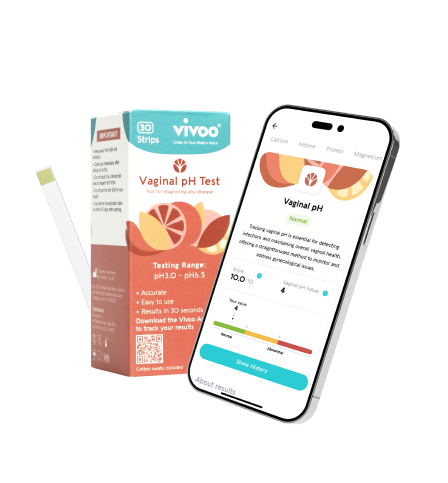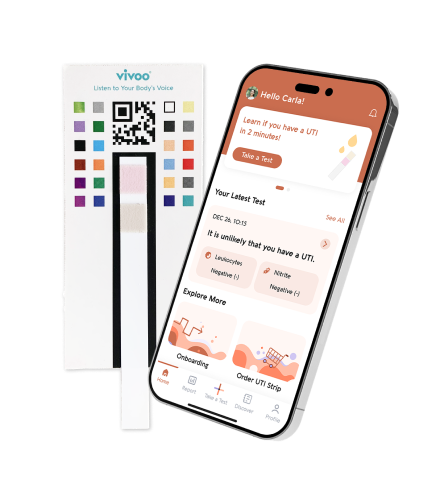Summary
Urine color changes according to your health, hydration and nutrition. It can range from pale yellow to gold when you are healthy and hydrated but can have a different color and texture when there is a problem or because of something you consumed. Urine is the excess material that needs to be removed from your body, and it can give a lot of information about your health. That’s why you should be careful about the color of your urine. You will find more about the meaning of urine colors and what changes can be made.
What Color Should Urine Be?
Healthy urine is generally pale yellow to gold. This yellow color comes from urochrome, which is the waste product from the breaking down of hemoglobin. Hemoglobin carries oxygen around your body. When it gets old, it is broken down and replaced with new red blood cells. The urochrome is then filtered from the blood by the kidneys and gives urine its color.
Urine Color Chart and Vivoo Parameters
Urine color can indicate certain issues in the body but only to a degree. If serious illness is suspected, a doctor should be consulted for a complete urinalysis. However, if you are in good health and wish to check on your general wellbeing, you can start by testing your urine with Vivoo.
Water box: If your urine ranges from dark to very light yellow, check the Water box carefully to get information on your hydration level.
Kidney box: If your urine is foamy, check the Kidney box as you may have protein in your urine.
Liver box: If your urine is dark orange to brown, check whether you have bile in your urine by looking at the Liver box.
UTI box: If you have cloudy or reddish urine, check the UTI box to see if a urinary tract infection is indicated.
Colorless Urine
Colorless urine shows that you are drinking more water than your body needs. Even though it is advised to drink water, when you exceed the daily required amount, your electrolyte-water balance can be thrown off. You don’t need to worry, though. Just reduce your water intake.
Related: The Ultimate Guide to How Much Water You Need to Drink
Pale Yellow or Gold Urine
Normal urine ranges in color from pale yellow to gold. Urine takes its color from urochrome. As you consume more water, the urine is diluted and its color lightens. Try to keep your urine color in this range to ensure optimal hydration.
Amber or Honey-Colored Urine
Amber to honey-colored urine is giving you the message that your body is dehydrated. If your urine color is darker than honey, your dehydration level is high so you should increase your water or liquid consumption. If your urine color doesn’t lighten, even after you increase your water intake for a period, you should consult your doctor.
Cloudy Urine
The main reason for cloudy urine is generally a urinary tract infection (UTI), but it may also indicate chronic disease, kidney problems, or dehydration. UTIs occur when bacteria amounts increase rapidly and your body sends white blood cells to the infected area. These white blood cells are later passed out of the body via the urine, resulting in a cloudy texture. If this condition continues for more than a few days, you should take a urinalysis and consult your doctor.
Foamy Urine
If your urine is foamy, it could mean that you have protein in your urine, which is an unusual condition. The kidneys should keep protein in your body, not filter it out. If you are seeing foamy urine for a while, you may have kidney disease caused by lupus or diabetes. The best thing to do is to take a urine test to see if you have protein in your urine. Then consult your doctor about the situation.
Red and Pink Urine
Even though a red or pink tint to urine may seem dangerous, it is usually due to something that can be cured. These colors can be due to blood in the urine caused by a urinary tract infection. Drinking water, eating cranberries, and practicing good hygiene will help to treat the infection. Some foods such as beets, blackberries or rhubarb can give pink or red hue to your urine as well.
Dark Orange or Brown
Liver or bile duct problems can cause dark orange or brown urine. When bile is present in the urine, it makes the urine color darker. Excess exercise may also make the urine brownish in color. Increasing your water intake and reducing the amount of exercise could help. However, if this urine color persists, you may have a problem in your liver.
General Suggestion
Urine is the waste material that is filtered from the blood by the kidneys and then passed out of the body. The key is to regulate your hydration and nutrition when you see a change in urine color or texture If you are unable to change the abnormal color through diet, take a urinalysis and consult a healthcare professional about the issue.









